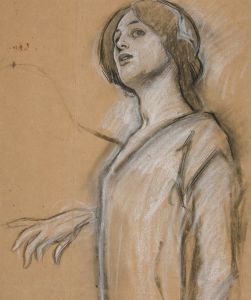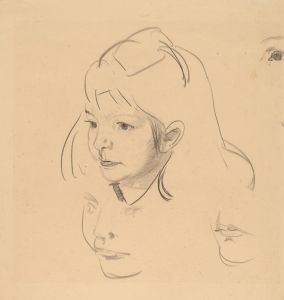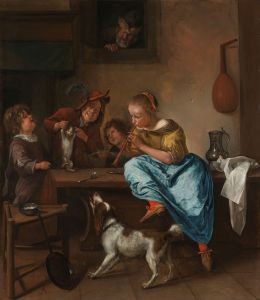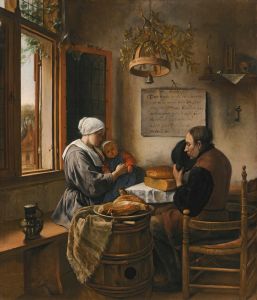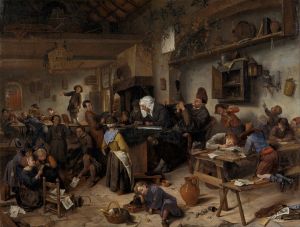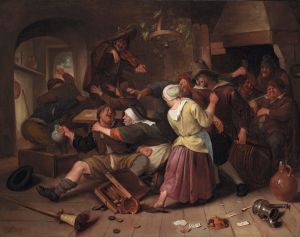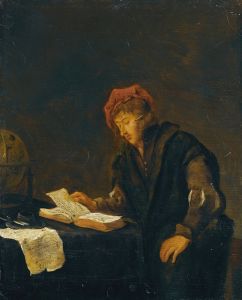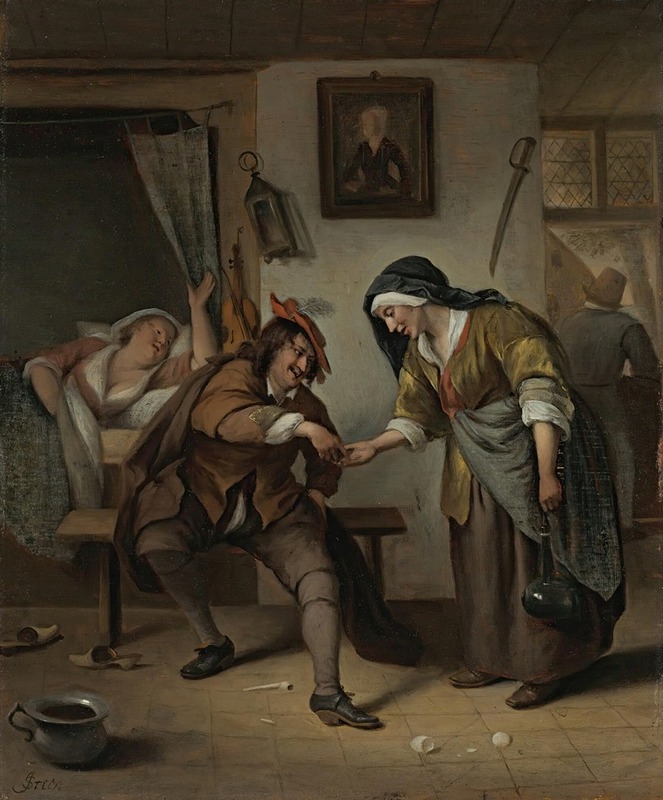
The Procuress
A hand-painted replica of Jan Steen’s masterpiece The Procuress, meticulously crafted by professional artists to capture the true essence of the original. Each piece is created with museum-quality canvas and rare mineral pigments, carefully painted by experienced artists with delicate brushstrokes and rich, layered colors to perfectly recreate the texture of the original artwork. Unlike machine-printed reproductions, this hand-painted version brings the painting to life, infused with the artist’s emotions and skill in every stroke. Whether for personal collection or home decoration, it instantly elevates the artistic atmosphere of any space.
"The Procuress" is a painting by the Dutch artist Jan Steen, created around 1656. Jan Steen was a prominent figure in the Dutch Golden Age of painting, known for his lively and often humorous depictions of everyday life. "The Procuress" is a fine example of his genre work, showcasing his ability to capture human expressions and interactions with a keen eye for detail and a touch of satire.
The painting is executed in oil on canvas and measures approximately 102 cm by 82 cm. It is currently housed in the Staatliche Museen in Berlin, Germany. The artwork depicts a scene that was common in Dutch genre painting of the time, focusing on themes of vice and morality. In "The Procuress," Steen presents a lively and somewhat risqué scene involving three figures: a young woman, a man, and an older woman, who is identified as the procuress.
The composition is set in an interior, where the young woman, dressed in a vibrant red gown, is seated at a table. She is being courted by the man, who leans towards her with a coin in his hand, suggesting a transaction. The procuress, standing beside them, oversees the interaction with a knowing expression. The presence of the procuress, a common figure in Dutch art, indicates the painting's theme of prostitution and the moral questions surrounding it.
Jan Steen's work is characterized by its rich color palette and dynamic composition. In "The Procuress," he employs these elements to draw the viewer's attention to the central figures and their interaction. The use of light and shadow adds depth to the scene, highlighting the expressions and gestures of the characters. Steen's attention to detail is evident in the textures of the fabrics and the various objects scattered around the room, which contribute to the narrative and atmosphere of the painting.
Steen often infused his works with humor and irony, and "The Procuress" is no exception. The painting can be seen as a commentary on human folly and the complexities of social interactions. The expressions of the characters, particularly the sly smile of the procuress, suggest a sense of complicity and awareness of the moral ambiguities at play.
"The Procuress" reflects the broader cultural and social context of the Dutch Republic in the 17th century, a period marked by economic prosperity and a burgeoning art market. Genre paintings like this one were popular among the Dutch middle class, who appreciated both their aesthetic qualities and their moral lessons. Steen's ability to blend entertainment with moral instruction made his works particularly appealing to contemporary audiences.
In summary, "The Procuress" by Jan Steen is a quintessential example of Dutch genre painting, capturing the artist's skill in portraying human interactions with wit and insight. Through its vivid depiction of a morally charged scene, the painting offers a glimpse into the social dynamics and cultural values of the time, while also showcasing Steen's mastery of composition and narrative.





